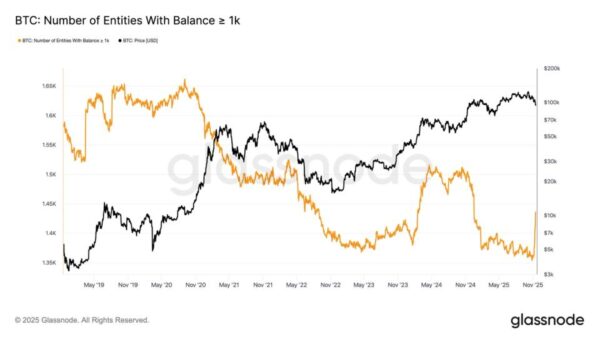In a bold move amidst ongoing market fluctuations, BitMine Immersion Technologies has announced an expansion of its Ethereum holdings to 3,559,879 ETH. This significant acquisition, revealed on November 16, 2025, comes despite a notable decline in the value of Ethereum, resulting in an overall asset drop of $1.4 billion for the company.
According to reports, the firm now holds this substantial amount of ETH, which represents 2.9% of the total global supply. Additionally, BitMine”s portfolio includes 192 BTC, alongside various equity investments and approximately $607 million in unencumbered cash. The recent acquisition marks an increase of over 54,000 ETH for the company.
BitMine”s chairman, Tom Lee, expressed a strategic perspective on Ethereum, emphasizing the digital asset”s role as a foundation for the future of finance. He stated, “We view ETH as the cornerstone of next-generation finance, and continue to execute our thesis by accumulating at opportune moments, cognizant of cyclical volatility but focused on the decade-long paradigm shift.”
The market”s reaction to this acquisition is noteworthy, as it mirrors previous large-scale institutional investments in cryptocurrencies. BitMine”s ETH holdings are now among the largest by a single institution, underscoring a growing institutional endorsement of Ethereum”s significance in the financial landscape.
At present, Ethereum (ETH) trades at $3,005.08, with a market capitalization of $362.70 billion and a market dominance of 11.64%, according to data from CoinMarketCap. The trading volume over the last 24 hours reached $42.91 billion, reflecting a shift of 57.93%. Recently, ETH experienced a 1.66% decline over the past 24 hours and a more substantial 27.31% drop in the past 90 days, marking a period of volatility for the asset.
BitMine”s substantial acquisition could potentially increase price volatility in the market if liquidated quickly, although the firm maintains a focus on stability. This trend illustrates a broader acceptance of cryptocurrencies as essential institutional assets, indicating a shift in how financial entities perceive and interact with digital currencies.






































































